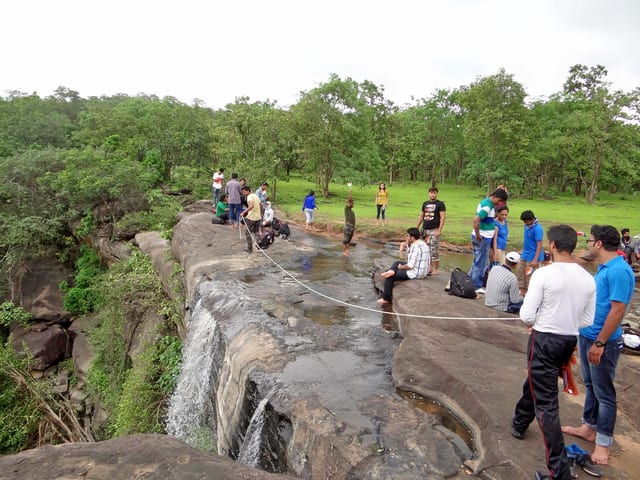In an era dominated by social media, the desire to capture the perfect moment and gain online validation has given rise to a concerning phenomenon: selfie addiction. Recent events at Mohadi Waterfall serve as a grim reminder of the dangers associated with this obsession. Two college students, caught up in the pursuit of the perfect selfie, tragically fell from a height of over 500 feet into the waters below. One of them drowned in the pond while another youth was saved by his friends. The rescue teams managed to recover his body after 20 hours of the incident on Sunday.
This incident highlights the urgent need to address the growing problem of selfie addiction and its potentially fatal consequences.
I. The Culture of Selfie Addiction :
Selfie addiction has become an integral part of modern culture. The fascination of capturing and sharing one's experiences with others has led to an unhealthy obsession with self-image and social media validation. The desire for likes, comments, and followers has pushed individuals to take increasing risks to capture attention-grabbing selfies.
II. The Hazards of Selfie-Taking :
The incident at Mohadi Waterfall demonstrates the inherent dangers associated with reckless selfie-taking. Engrossed in their pursuit of the perfect shot, the two students neglected their safety, leading to a tragic outcome. Whether it be posing on cliffs, near raging rivers, or in dangerous locations, individuals often underestimate the potential risks involved.
III. Psychological and Social Implications :
Selfie addiction goes beyond physical risks; it also has significant psychological and social implications. The constant need for validation through likes and comments can negatively impact one's self-esteem and self-worth. It creates a culture of comparison, where individuals strive to portray an idealized version of themselves. This can lead to feelings of depression when the desired response is not achieved.
IV. Combating Selfie Addiction :
To address the growing problem of selfie addiction, a multifaceted approach is necessary.
a) Education and Awareness: Creating awareness about the risks and consequences of reckless selfie-taking through educational campaigns can help individuals make informed decisions.
b) Responsible Social Media Use: Encouraging responsible social media use by promoting authenticity and emphasizing the value of experiences over likes and followers.
c) Personal Reflection and Mindfulness: Encouraging individuals to reflect on their motivations behind taking selfies and fostering a mindful approach to self-image and social media usage.
The tragic incident at Mohadi Waterfall serves as a reminder of the dangers associated with selfie addiction. As a society, we must recognize the importance of fostering a healthier relationship with social media and prioritize personal safety over virtual validation. By raising awareness, promoting responsible use, and encouraging mindfulness, we can work towards a culture that values genuine connections and embraces the beauty of the present moment, rather than risking lives for the sake of a selfie.

 The tragic incident at Mohadi Waterfall serves as a reminder of the dangers associated with selfie addiction. As a society, we must recognize the importance of fostering a healthier relationship with social media and prioritize personal safety over virtual validation
The tragic incident at Mohadi Waterfall serves as a reminder of the dangers associated with selfie addiction. As a society, we must recognize the importance of fostering a healthier relationship with social media and prioritize personal safety over virtual validation










.jpeg)













.jpg)
.jpeg)





